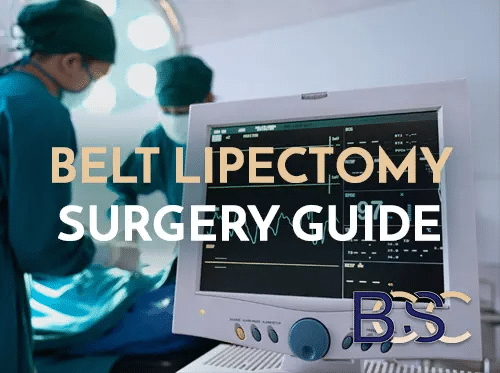Understanding the Risks & Complications of Abdominoplasty Surgery
Abdominoplasty is a surgical procedure that removes excess skin and fat from the abdominal area while also allowing for the repair of separated abdominal muscles. While the operation can improve abdominal appearance and comfort, it is important to remember that all surgery carries risks.
A consultation with your surgeon should always include a detailed discussion of potential risks and complications. This allows you time to ask questions and make an informed decision. At Body Contouring Surgery Clinic (BCSC), patients are provided with written information about risks and complications, and a second consultation is offered at no additional charge.
Common Risks and Complications
Abdominoplasty surgery may be associated with several more commonly seen risks. These include:
- Seroma (fluid accumulation)
- Haematoma (blood accumulation)
- Infection at the incision site
- Blood clots (deep vein thrombosis or pulmonary embolism)
- Lower abdominal numbness
Seroma
During abdominoplasty, a pocket is created under the skin. The body may respond by filling this space with fluid, resulting in a seroma.
- Preventative measures can include the use of plication stitches, tissue glue, or drains.
- At BCSC, a no-drain technique is often used, relying on internal stitches and tissue glue.
- If a seroma occurs, it is usually managed in-clinic by aspiration (removing fluid with a needle and syringe). This process may need to be repeated over several weeks.
Scarring
All surgical procedures result in scarring. With abdominoplasty, scarring may vary in appearance and can include:
- Hypertrophic scars
- Widened scars
- Keloid scars
Your surgeon will monitor the healing process, and scar management treatments may be recommended if required.
Haematoma
A haematoma is a collection of blood under the skin following surgery.
- Small haematomas may resolve with conservative management.
- Larger haematomas may require surgical evacuation to remove the blood and stop ongoing bleeding.
Infection
Infections may develop around the incision sites after abdominoplasty.
- Superficial infections are usually managed with oral antibiotics.
- More significant infections may require hospitalisation, intravenous antibiotics, wound irrigation, or surgical treatment.
Blood Clots
Blood clots can form in the deep veins of the legs after major surgery.
- Preventative measures include the use of anticoagulant injections, compression stockings, and calf compressors during and after surgery.
- Symptoms such as pain, swelling, or redness in the legs should be assessed urgently. Clots typically present within the first week following surgery.
Wound Healing Issues
Some patients experience difficulties with wound healing. These may include:
- Wound separation
- Necrotic skin (skin loss due to poor blood supply)
- Stitch sinuses (small tracts from sutures under the skin)
- Delayed wound healing
- Raised or hypertrophic scars
Close follow-up with your surgical team is important for early recognition and management.
Keloid Scars
Some individuals may be prone to keloid scar formation.
- Regular follow-up appointments with your surgeon and wound care nurse help identify and treat this early.
- Treatments may include silicone dressings, steroid injections, or other scar therapies.
Numbness
Temporary numbness is common after abdominoplasty.
- It is usually most noticeable in the lower abdomen, around the umbilicus (belly button), or along the incision line.
- Sensation often improves over 6–12 months, but in rare cases numbness can be permanent.
Rare but Serious Complications
Although uncommon, serious risks can occur. These include:
- Extensive skin flap necrosis (skin loss)
- Severe bleeding requiring urgent surgery
- Deep infections
- Severe allergic reactions to anaesthetic
- Chronic pain
- Long-term skin discolouration
The risk of serious complications is estimated at less than 1%. Careful surgical technique, pre-operative assessment, and strict adherence to post-operative instructions all help minimise these risks.
Frequently Asked Questions
Is Abdominoplasty High Risk?
Abdominoplasty is considered a major operation. Most complications are minor, but more significant complications occur in around 1–2% of cases.
How Does Abdominoplasty Compare to a Caesarean Section?
Both procedures carry risks, but they are different operations. Abdominoplasty generally involves more dissection of tissue and often requires a longer recovery period than a caesarean section.
Final Thoughts
Abdominoplasty can be an effective procedure for carefully selected patients. It is essential to understand both the potential benefits and the possible complications. A thorough consultation with your surgeon, written information, and ongoing follow-up care will help you make an informed choice and support a safe recovery.


